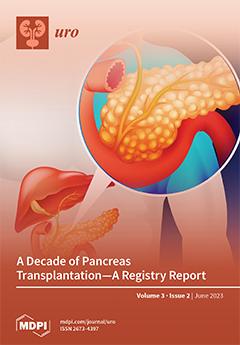Open AccessReview
Current Knowledge on Radiation-Therapy-Induced Erectile Dysfunction in Prostate-Cancer Patients: A Narrative Review
by
Connie Labate, Andrea Panunzio, Francesco De Carlo, Federico Zacheo, Sara De Matteis, Maria Cristina Barba, Umberto Carbonara, Floriana Luigina Rizzo, Silvana Leo, Saverio Forte, Pasquale Ditonno, Alessandro Tafuri and Vincenzo Pagliarulo
Viewed by 3110
Abstract
Prostate cancer is the most frequently diagnosed cancer in men in the United States. Among the different available treatment options, radiation therapy is recommended for localized or even advanced disease. Erectile dysfunction (ED) often occurs after radiation therapy due to neurological, vascular, and
[...] Read more.
Prostate cancer is the most frequently diagnosed cancer in men in the United States. Among the different available treatment options, radiation therapy is recommended for localized or even advanced disease. Erectile dysfunction (ED) often occurs after radiation therapy due to neurological, vascular, and endocrine mechanisms resulting in arterial tone alteration, pudendal-nerve neuropraxia, and lastly fibrosis. Considering the influence of quality of life on patients’ treatment choice, radiation-therapy-induced ED prevention and treatment are major issues. In this narrative review, we briefly summarize and discuss the current state of the art on radiation-therapy-induced ED in PCa patients in terms of pathophysiology and available treatment options.
Full article
►▼
Show Figures



